Eating fruits is an important part of a healthy diet. Fruits are packed with vitamins, minerals, and fiber that can help reduce the risk of chronic diseases such as heart disease, diabetes, and cancer. However, not all fruits are created equal when it comes to their nutritional value. Some are high in sugar and calories, while others are low in nutrients.
In this blog post, we will explore the top 10 healthy fruits and the top 10 not-so-healthy fruits. We will look at the nutritional benefits of each fruit, such as its vitamin and mineral content, as well as its sugar and calorie content. This information will help you make informed decisions about which fruits to include in your diet.
Whether you’re looking to maintain a healthy weight or reduce your risk of chronic diseases, knowing which fruits are healthy and which ones are not can make a big difference. So, let’s dive in and discover which fruits you should be eating more of and which ones you should be limiting.
The Good and Bad of Fruits: A Guide to the Healthiest Options
We’ve all heard the adage, “Don’t forget to eat your five a day.” But what many people don’t realize is that not all fruits are created equal. While some fruits provide a host of vitamins, fiber, and antioxidants that promote good health and disease prevention, others offer little in the way of nutritional benefits and can even lead to blood sugar spikes. In this article, we’ll explore some of the best fruits for your health, as well as those that should be consumed in moderation. Keep in mind that there are no “bad fruits,” but some are certainly more beneficial than others. So, let’s take a closer look at the best and worst of the fruit world to help you make informed choices about what you’re putting into your body.
Healthy Fruit: The Good Guys
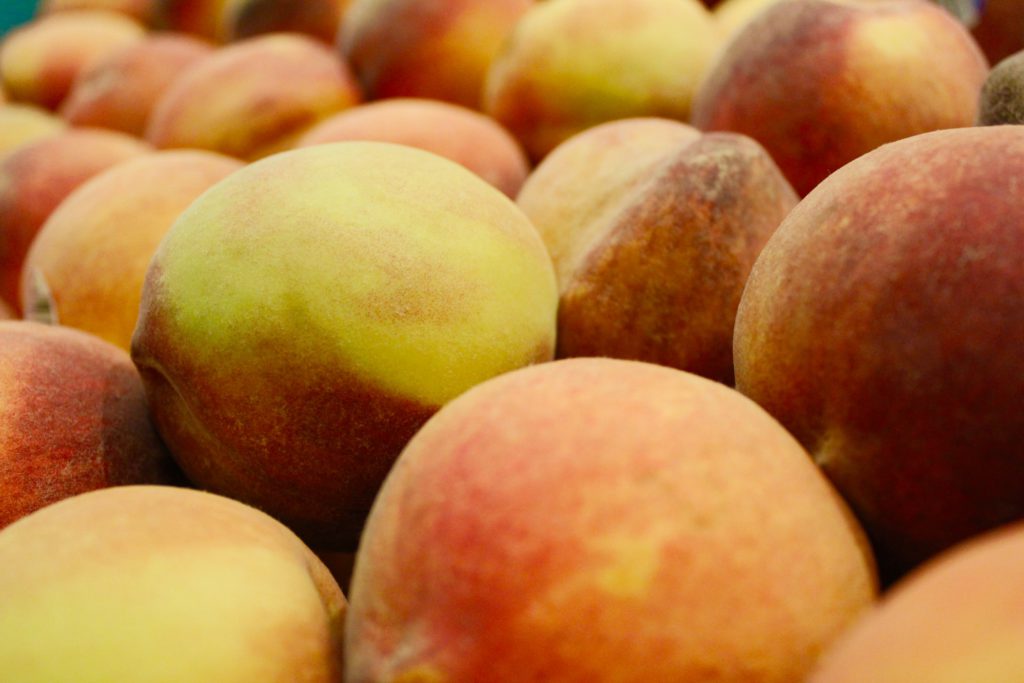
1. Peaches and Nectarines
Other than being a delicious spring and summertime snack, peaches and nectarines offer many health benefits.
They are high in antioxidants, which give them their bright color and occasional bitterness.
Antioxidants can reduce the numbers of what are called “free oxygen radicals,” which are small oxygen by-products generated by our body during metabolism and other processes.
These radicals can go on to damage DNA and cellular materials, causing diseases like cancer.
(Raw honey is another excellent source of antioxidants; read about honey’s other great health benefits in our article “The Sweet Benefits of Raw Honey.“
Peach peel and pulp are also high in flavan-3-ols, which are a compound found in many plant-based foods.
Flavan-3-ols have been noted to reduce the risk of cardiometabolic disorders and improve hypertension (high blood pressure), insulin resistance (development of Type II Diabetes), and obesity.
Researchers have also found that people who eat more nectarines and peaches tend to have higher dietary fiber, vitamin C, magnesium, and potassium intake in their diet, which are all healthy and essential micronutrients.
Peach and nectarine eaters also had lower body weight and BMIs, compared to those participants who ate few to none of these healthy fruits.
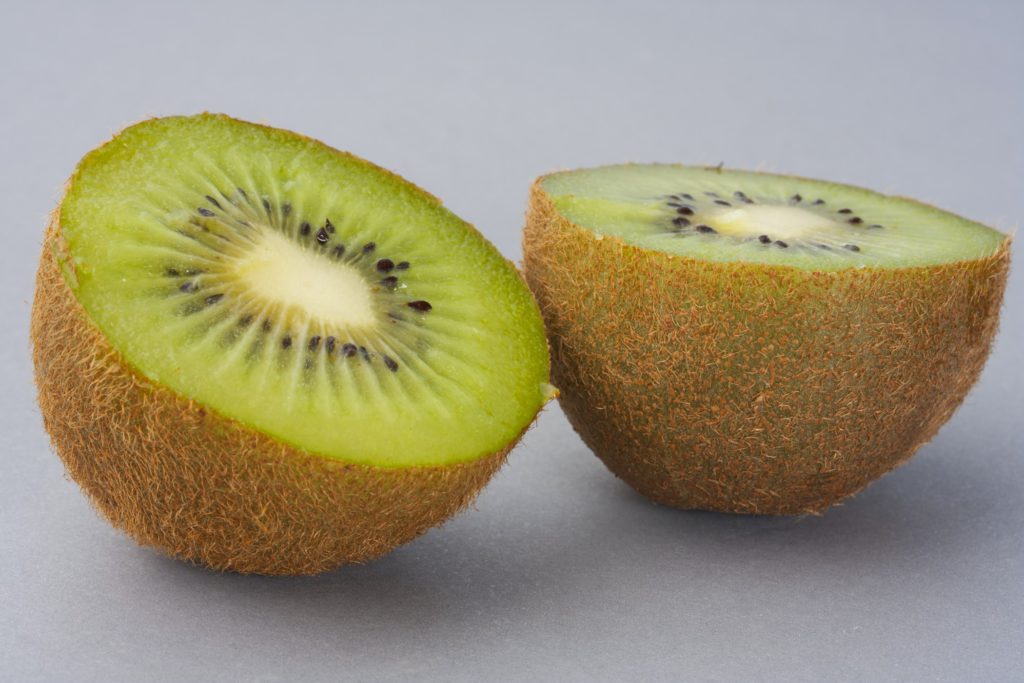
2. Kiwi Fruit
Another fun and delicious fruit that kids and adults alike love, this hairy delight brings a host of nutrients to your snack plate.
Initially used in Chinese traditional medicine for treating cancer (in a method then called “kiwi therapy”), we now know many of the cancer-fighting properties of kiwi fruit are from its high level of antioxidants.
Kiwi fruit also contains peptide compounds that are thought to aid intestinal healing, relieving symptoms of Crohn’s Disease.
Kiwis are also high in vitamin C, which is involved in collagen formation, wound healing, and maintenance of cartilage, bones, and teeth.
Vitamin C also lowers levels of cortisol, the stress hormone (read more about cortisol in our article “Stay Calm with These Cortisol-Lowering Foods“).
High levels of polyphenols are also found in kiwis, which are known to improve and treat digestion problems, diabetes, neurodegenerative diseases, and cardiovascular diseases, which makes them very healthy fruit.
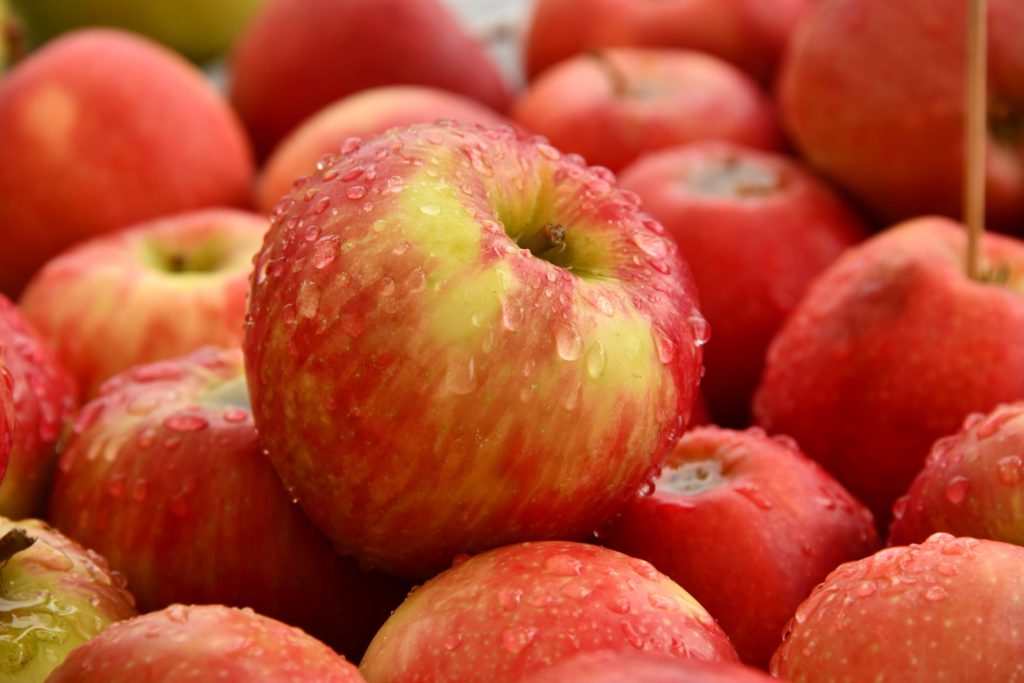
3. Apples
Since the phrase “an apple a day keeps the doctor away,” we’ve known about the health benefits of this healthy fruit.
Apples have positive effects on cardiovascular disease severity and improve vascular function, blood pressure, and inflammation.
Many of these benefits come back to polyphenols. The most essential polyphenols include catechin, epicatechin, chlorogenic acid, and quercetin.
Catechin, also found in green tea, has long been used to prevent infectious diseases and related conditions.
Quercetin has been examined for its potential as a protectant against neurodegeneration and is under investigation as an anti-cancer substance.

4. Grapefruits
Grapefruit is a well-known superfood, preventing cancer, inflammation, and tumor growth; it has also been found to promote obesity control and heal bones.
This bright pink fruit also is high in citric acid (a natural antioxidant), flavonoids (reduce the risk of cancer, heart disease, asthma, and stroke), limonoids (anti-cancer molecules found in citrus), and coumarins (natural compounds used by doctors to treat mononucleosis, mycoplasmosis, and malaria).
One little-known compound in grapefruit is a metabolite called “furanocoumarin,” which is prevalent in citrus.
Furanocoumarin is well-known to doctors as an antioxidative, anti-inflammatory, and anti-cancer compound that can also promote healthy bone development and repair.
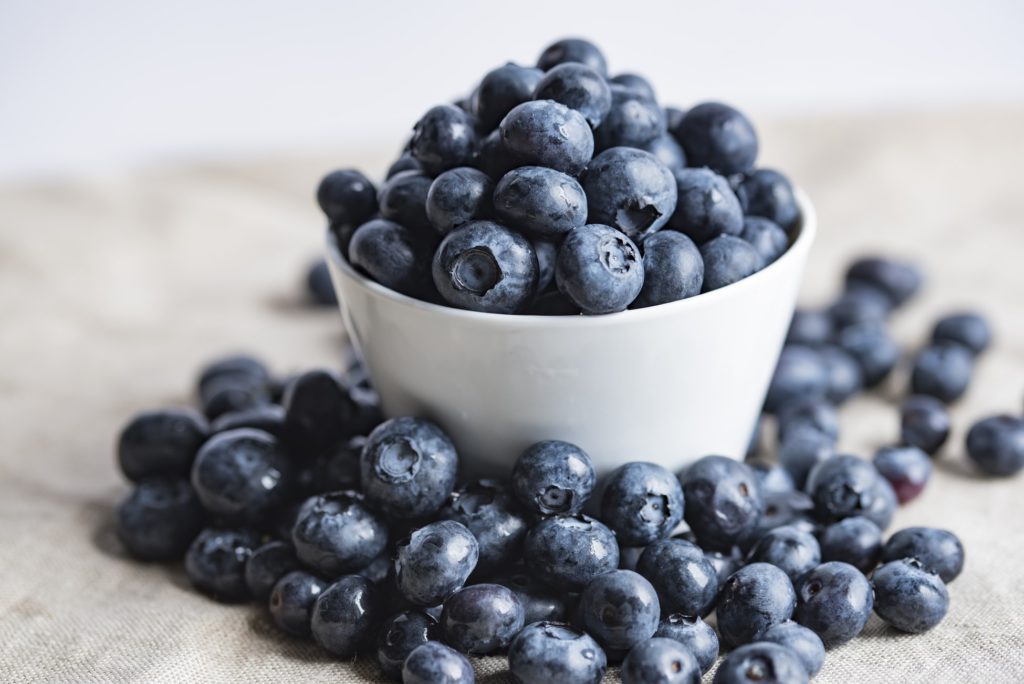
5. Blueberries
Blueberries are a fun and tasty treat whose vibrant color gives away their nutritional storage.
A good rule of thumb to follow when choosing fruits is the richer/darker the color, the healthier they are (with a few exceptions, of course!).
Blueberries, like peaches, are darkly colored in part due to their high antioxidant level.
Blueberries can reduce adverse changes in genetic information that can lead to cancer, reduce the risk of cardiovascular disease, and reduce chronic inflammation.
While we know very little about neurodegenerative diseases like Parkinson’s Disease, the pigment in blueberries does provide some neuroprotective properties, and more investigation on this topic is ongoing.
Blueberries are also able to even out and regulate blood sugar levels in rats and prevent obesity in animal models.
The many phenolic compounds in blueberries are anti-microbial, meaning they can kill bacteria, making them an excellent bacteria-fighting addition to cosmetics, foods, and pharmaceuticals.
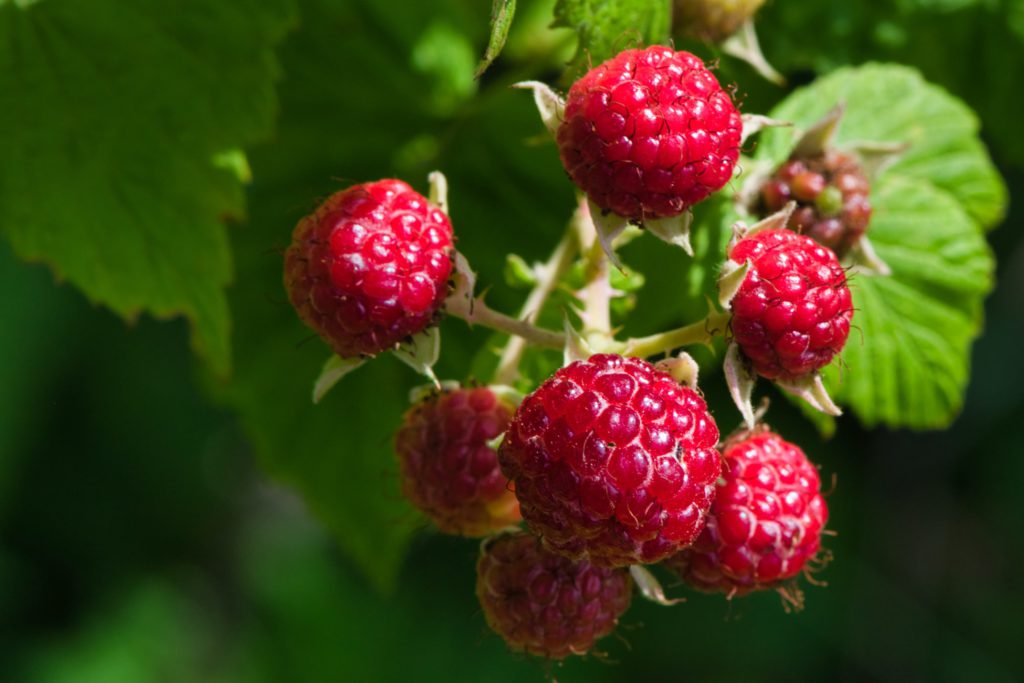
6. Raspberries
There is nothing like fresh raspberries in the summertime, but perhaps there is more than meets the eye in this sweet treat.
Contrary to their taste, raspberries are actually extremely low in calories and high in dietary fiber.
Their seeds are gemstones of nutrition, containing primarily unsaturated fatty acids and fiber, which together slow digestion and regulate blood sugar levels, preventing fluctuations.
These sweet berries also have high levels of carotenoids (a beneficial antioxidant and immune/eye health modulator) and tocopherols (reduces inflammation and promotes anti-cancerous cell growth) in their seeds.
Of course, in addition to these, raspberries are high in calcium, magnesium, phosphorous, and potassium, all of which contribute to a healthy body!
To sum this all up, raspberries are high in antioxidants, and their phenolic compounds have anti-inflammatory properties that can prevent a myriad of diseases.
They also have been noted to have anti-microbial activities against a variety of bacteria, inhibiting the growth of Staphylococcus and Salmonella (both of which can cause nasty skin, stomach, and blood infections) in preclinical studies.

7. Tart Cherries
Using our rule of “dark-colored fruits are typically healthier,” cherries of all kinds contain high levels of antioxidants, which give them their color (similar to blueberries).
They also have been found to improve sleep, cognitive function, and exercise recovery in clinical studies.
Tart cherries are an improvement over other varieties because they lack the high sugar (primarily fructose) content of other cherries, while still containing all of the health benefits.
In exercise studies, tart cherry juice was noted to speed muscle damage recovery and reduce inflammation that results in osteoarthritis.
Cherries can protect against diabetes and cardiovascular disease, inflammation, exercise-induced muscle damage, and many more conditions, as found in a series of clinical investigations.
Tart cherries, in particular, have also been noted to increase the levels of “healthy bacteria” in the gut, including Bifidobacterium and Prevotella, while decreasing harmful bacteria such as Ruminococcus and Collinsella.
This can improve digestion and nutrient absorption, and help to normalize bacterial levels in conditions such as Irritable Bowel Syndrome, which is characterized by incorrect proportions of gut bacteria.

8. Oranges
We’ve always eaten (or drunk!) these healthy fruits when we’re sick, but they’re jam-packed with vitamins and minerals, far beyond Vitamin C.
They are also high in phytonutrients, carotenoids, and flavonoids.
Their antioxidants can reduce the risk of cancer, aging effects, and atheroma plaque development when eaten as part of a regular diet.
While orange juice maintains some of these features, it’s important to note that the fiber and other benefits are found in the pulp, so eating whole oranges is always better, and lower in sugar, too!
In clinical studies, the healthy fruit red oranges reduced the inflammation that can lead to cardiovascular disease because of their high antioxidant level.
Red oranges have also been credited with anti-cancer, anti-diabetes, and atherosclerosis protection properties, suspected to be because of their antioxidant content.
However, studies into how they achieve this on a cellular level are still ongoing.
Orange peel also has high levels of hesperidin and hesperetin, which are known for improving wound healing, UV protection, and inflammation.
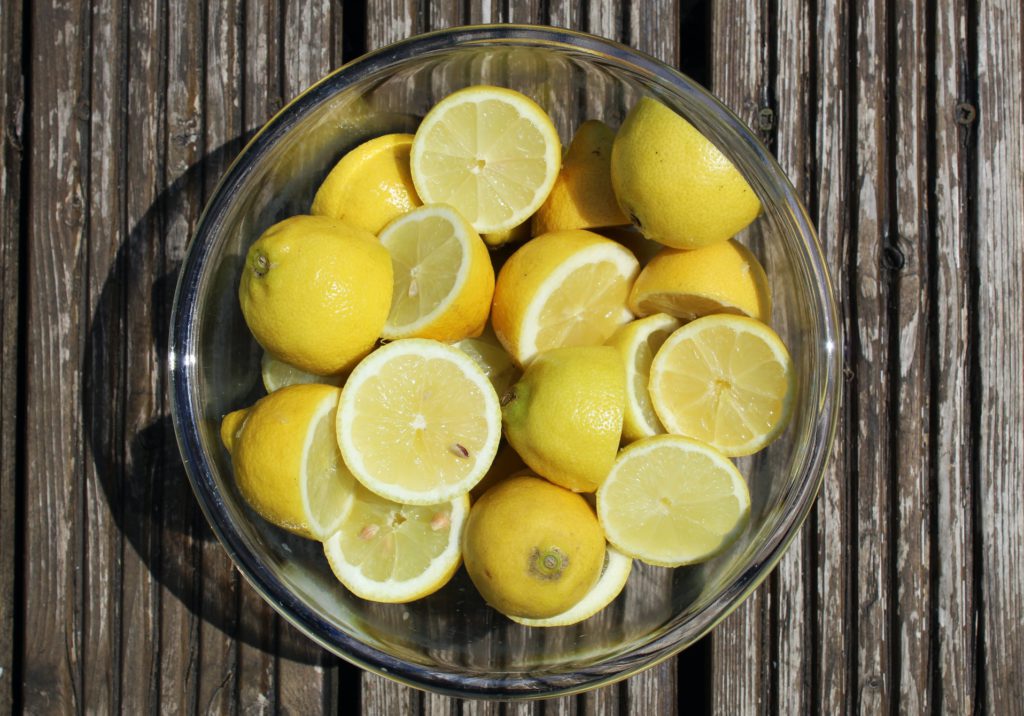
9. Lemons
Lemons, like oranges, are an underrated citrus fruit primarily consumed as a drink (lemonade and tea).
However, they contain phenols, antioxidants, vitamins, minerals, fiber, essential oils, and flavonoids.
Lemons have long been used for the prevention of obesity, diabetes, cardiovascular disease, and cancer.
As science continues to progress, we are piecing together how this miracle fruit manages these fantastic feats.
Low in carbohydrates and sugars, this healthy fruit is also good for the waistline as well as overall health.
Lemons are also a source of magnesium, phosphorous, calcium (and you thought you could only get this from dairy products!), iron, and zinc.
They contain a range of B vitamins and, of course, Vitamin C, for which citrus is best known.
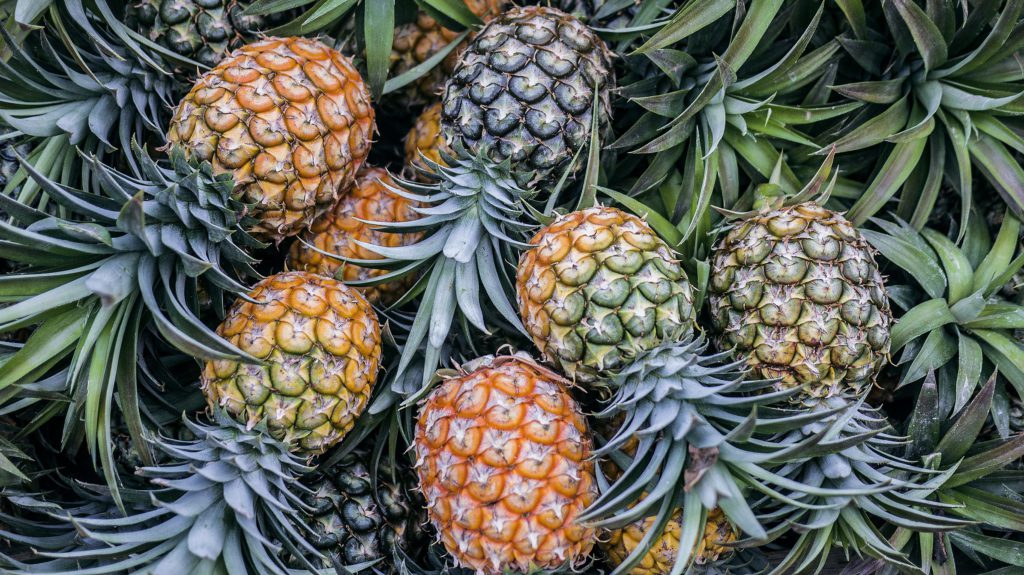
10. Pineapple
To polish off our list of the best fruits for you nutritionally, pineapple is one that sits on the fence between good and evil, and thus should be eaten in moderation.
Eating an entire pineapple in one sitting, while tempting, is not conducive to a healthy diet, primarily because of the high sugar content of the fruit (a whopping 90 grams of sugar, the equivalent of 22.5 teaspoons!).
But don’t let that turn you off of the healthy fruit, as it does have many benefits.
While low in fiber, pineapple remains a good source of phosphorous, iron, magnesium, and potassium. It’s a good source of vitamins C, A, and B, as well as folate and beta-carotene.
In a study done in school-aged children, canned pineapple given regularly was shown to decrease “bad bacteria,” increase the weight of underweight participants and shorten the duration of bacterial infections.
But, the low fiber and high sugar content of this fruit put it on the border between the good and bad lists.
The Not-So-Healthy Fruit
Firstly, there are no harmful fruits, and indeed, none that you should forever strike from your grocery list for fear of their “disease-inducing properties.”
However, some fruits are high in sugar and low in, well, almost everything else, and for that reason, should be eaten in moderation.
But, all fruits are good sources of minerals, vitamins, and other compounds that are part of a healthy diet.
So let’s go through some of the items that should stay on your plate, but sparingly.
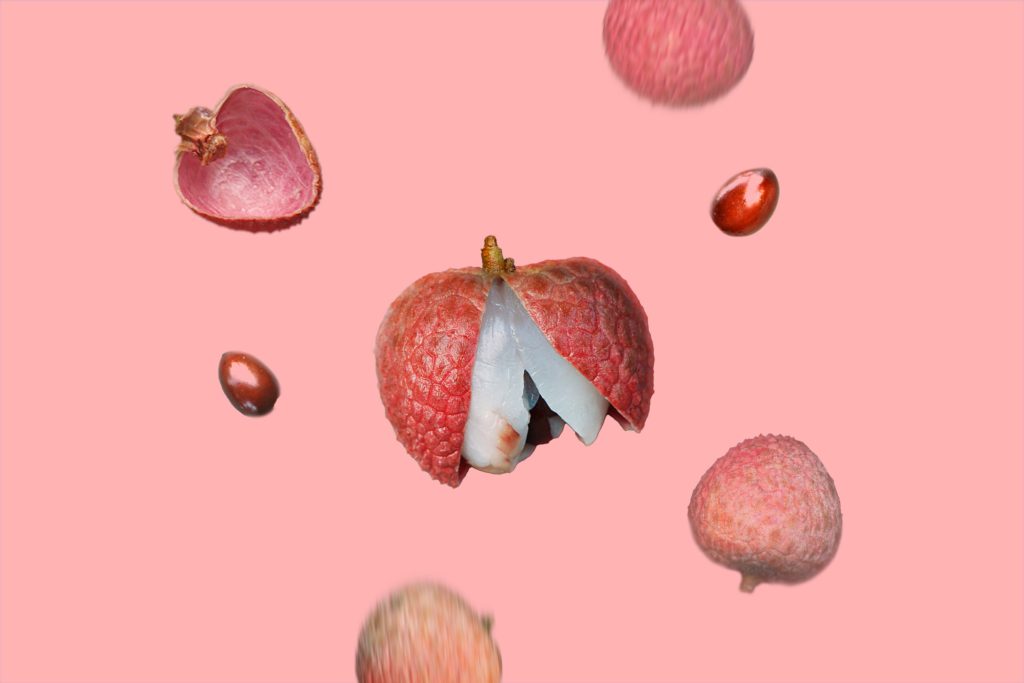
1. Lychee Fruit
Lychee is a healthy fruit prevalent in India and Asia and possesses numerous health benefits, including flavonoids, which can improve health in the same way as antioxidants.
They also are high in polyphenols, which can improve cardiovascular diseases, treat digestion problems, and help weight management.
In fact, polyphenols from lychee fruit have been used to reduce the neuroinflammation that can result in Parkinson’s and Alzheimer’s diseases.
But, they are low in fiber and most nutrients they do contain, and their high sugar content (15 grams of sugar in 100 grams of fruit) makes them a less-than-desirable option for nutritious fruit consumption.
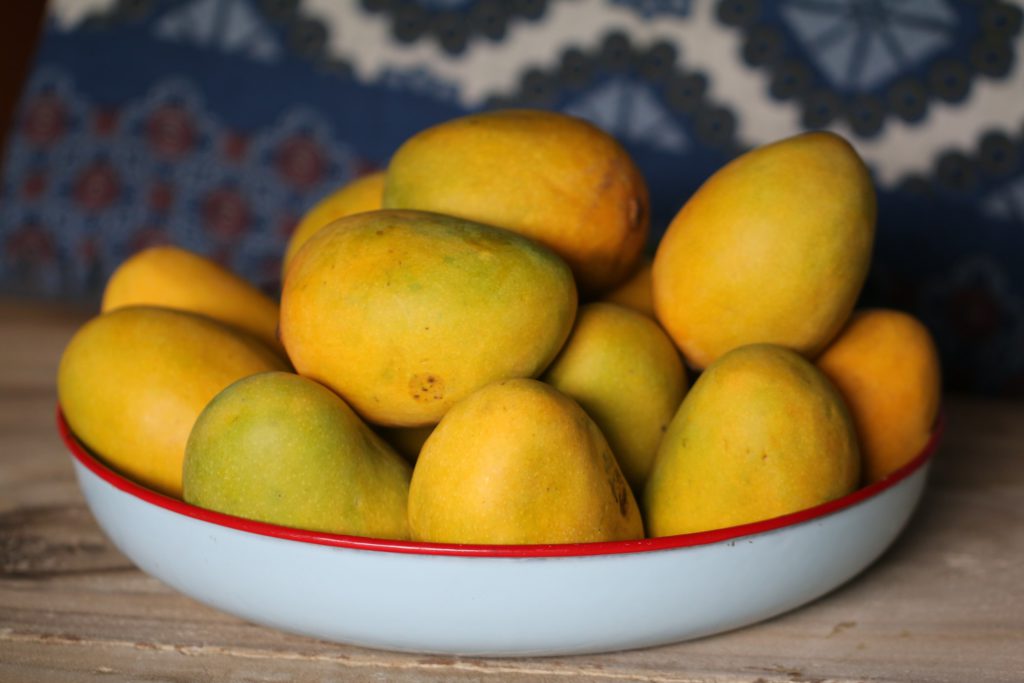
2. Mangoes
Mangoes are a delicious source of mangiferin, which contains antioxidant, anti-inflammatory, hypoglycemic, and immunomodulatory properties.
It is also loaded with phytochemicals, including polyphenols and carotenoids, and provides a source of fiber, fat, and vitamins.
Mango fruits contain antioxidants, and antiproliferative chemicals that prevent cancer formation, and reduce triacylglycerides in animal diabetes models.
Mangoes also possess a large number of other micronutrients, including catechins (natural antioxidants), rhamnetin (a flavonoid), and vitamins C and E.
However, mangos land on our “eat sparingly” list because of their high sugar levels (46 grams of sugar in a whole mango), and only small amounts of many of these nutrients.
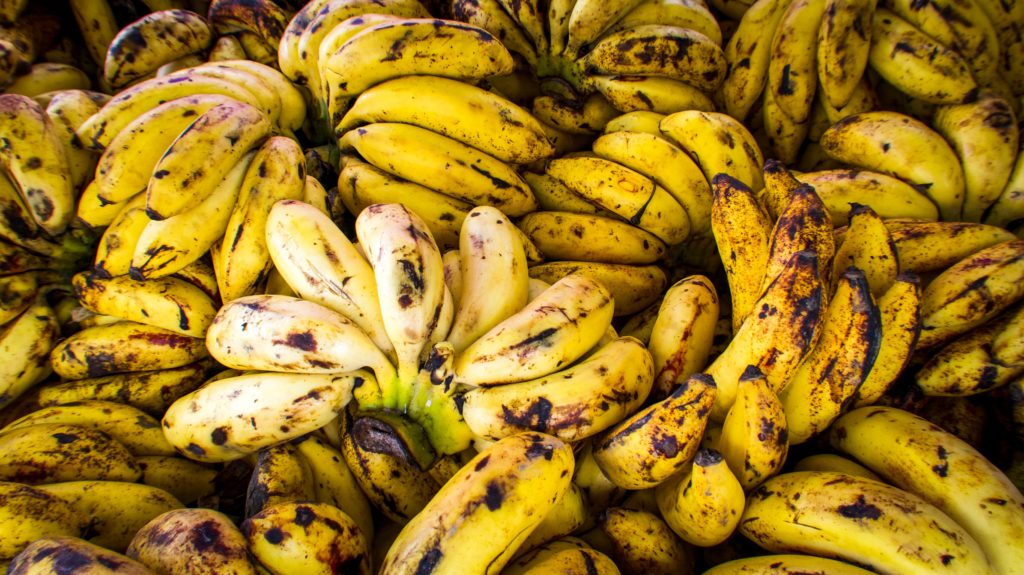
3. Bananas
Bananas have, in recent years, become incredibly popular because of their sweet taste, smooth texture, and versatility for desserts and baking.
But, unfortunately, while some antioxidants and fiber are present in bananas, the levels are low.
They are high in potassium, which makes them beneficial to eat, but are very high in sugar, with 14 grams in a small or medium-sized banana.
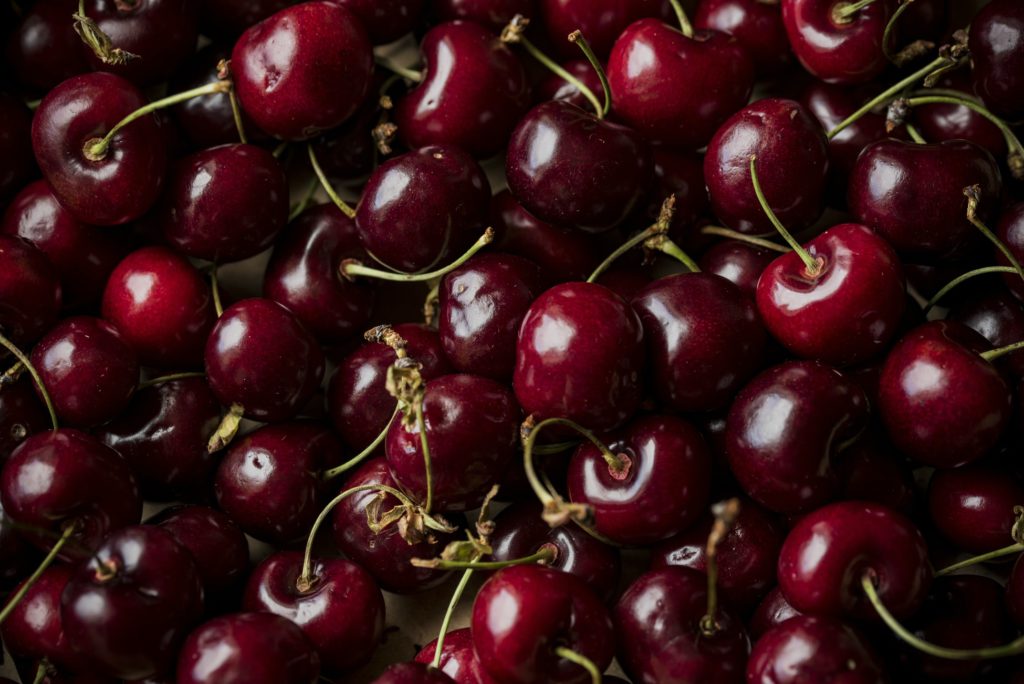
4. Cherries
The fact that tart cherries are on our “healthy fruit” list and regular cherries are not is confusing.
But it all comes down, as usual, to sugar content.
As described in the tart cherry section (good fruit #7), there are many beautiful properties in cherries, especially for those who are very active, as they’ve been noted to improve muscle repair.
But, regular cherries are very high in sugar with 13 grams of sugar in 1 cup (which is not that many cherries – approximately 8).
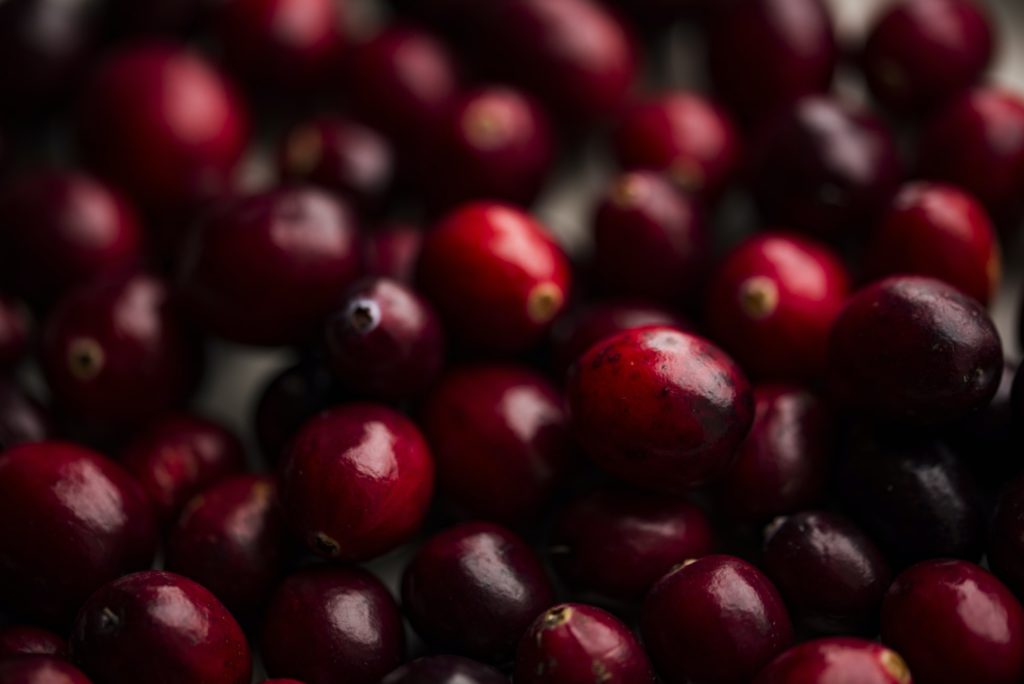
5. Cranberries
Unlike many of the fruits on this “not so good” list of fruits, cranberries are not naturally lovely.
If you’ve ever tasted a ripe one, they’re actually quite sour and bitter.
They’ve been used extensively as a home remedy for Urinary Tract Infections due to their A-type proanthocyanidins (PACs), which stop the bacteria from adhering to the bladder wall.
However, a common source of confusion is that drinking cranberry juice cocktails is the same as eating cranberries, but because these fruits are so bitter, a large quantity of sugar is added to juice to make it taste good.
Sugar feeds UTI-causing bacteria and actually worsens the condition, rather than improving it.
Another health remedy gone wrong is cranberries as a cure for kidney stones.
Cranberries are high in calcium oxalate, which can form kidney stones, although clinical studies have been unable to link cranberry consumption directly to kidney stone production.
Cranberries do, however, inhibit inflammation and oxidative stress, which makes them a recommended dietary addition for those with diabetes, vascular complications, and other medical problems.
But, this recommendation is for cranberries with no added sugar (not in baking, like cranberry sauce, jam, juice, or dried cranberries, which are all too high in sugar).
The high sugar needed to make these berries delicious and easier to eat puts them on our “not-so-good fruit” list.

6. Grapes
Grape and grape products (juice, snacks, wine, etc.) are an ever-popular treat year-round.
Grapes have minute amounts of fiber and protein and virtually no fat.
They are primarily sugar, containing 16 grams of sugar in a single cup.
But, they do have some benefits, including antioxidants and polyphenols.
Some beneficial health effects, including enhanced vascular and cardiovascular function and healing, are attributed to antioxidant and flavonoid compounds in grapes.
In clinical studies, grapes have lowered inflammation, prevented cell “sickness,” and lowered blood pressure.
In fact, grapes have been used for centuries in Egypt to treat cholera, smallpox, liver disease, and cancer, and are now used to treat coronary heart disease, stroke, and hypertension (high blood pressure).
While it does not replace the improved medical treatments of today, additions of grapes to your diet are far from a bad thing.
Due to the high sugar content and low levels of other nutrients, vitamins, and minerals, though, they should be eaten in moderation.
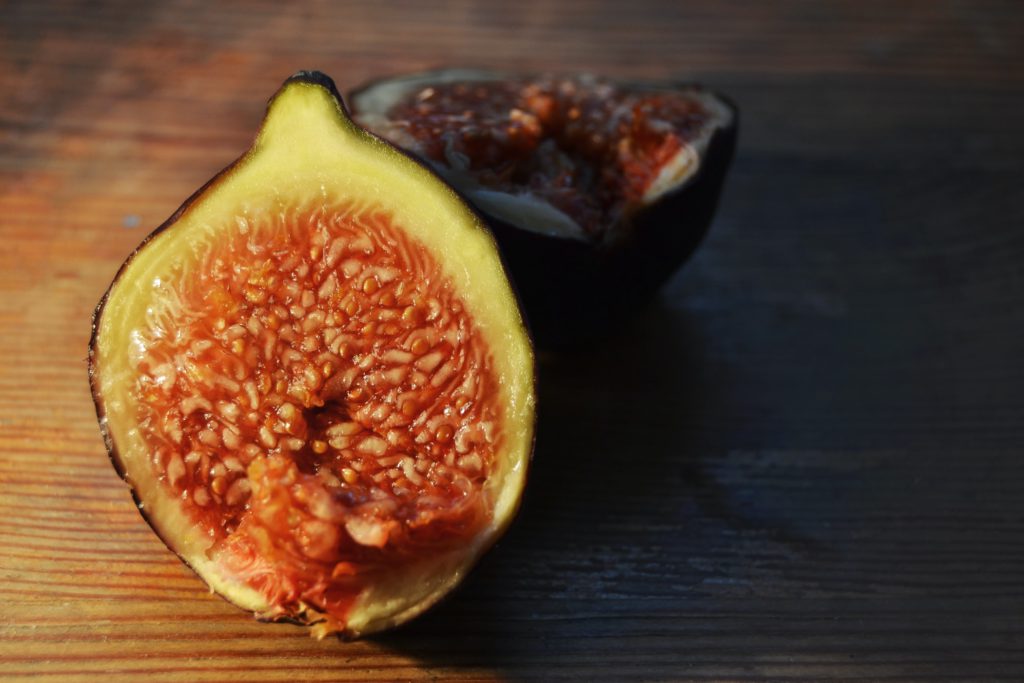
7. Figs
Figs are not unhealthy but are one of the worse culprits for hidden sugars.
They’re intensely sweet when ripe, and are often used in baking and snacks (think of your beloved childhood favorite – Fig Newtons).
They do, as many of the fruits in this list, have their redeeming qualities, including high polyphenols, flavonoids, and antioxidants such as cyanidin.
They’ve been shown to reduce cancer cell proliferation and are anti-inflammatory, likely because of these compounds.
But, figs are one of the most sugar-dense foods eaten today, with a monumental 8 grams of sugar in a single, small fig.
That means if you had just 4 of these little healthy fruits, you’d eaten the sugar equivalent of 8 teaspoons of table sugar.
And that is a small, rather unsatisfying snack.
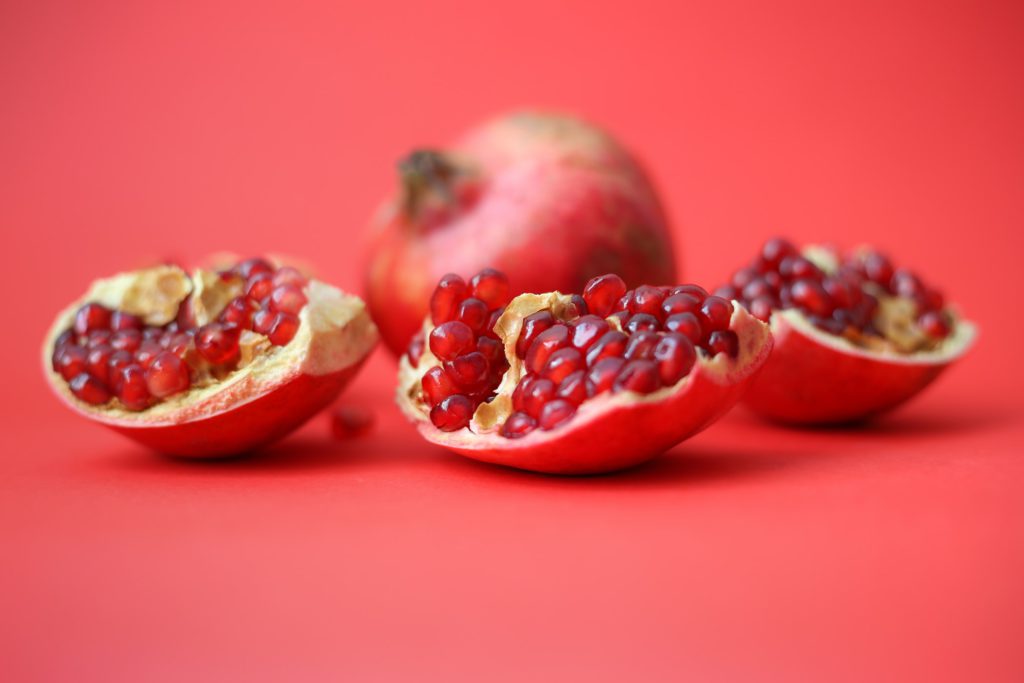
8. Pomegranates
Pomegranates are another fruit that, while part of a healthy diet, is not ideal for eating large quantities of.
Pomegranates have been used in the Mediterranean and the Middle East for centuries to treat high blood pressure, high cholesterol, and inflammatory conditions.
In recent years, they’ve been examined for their activity against several forms of cancer (breast, lung, colon, and skin, among others), cardiovascular disease, and metabolic diseases.
They even have a unique tannin (called punicalagin) found only in pomegranates, which is one of the most potent antioxidants yet discovered in a fruit.
Shown to reduce plaque on teeth, improve rheumatoid arthritis symptoms, have anti-microbial (bacteria-killing) functions, and even lessen symptoms of fatty liver disease, this life-saving fruit seems to be the answer to a medical doctor’s prayers.
However, far from advising you to begin eating pounds of these fruits a day, we now come to the bad news.
Pomegranates have a lot of sugar mixed in with those delightful antioxidants and healthy compounds.
A total of 40 grams of sugar can be found in a single pomegranate, and when you squeeze out the juice from all of those seeds, it isn’t very much.
Pomegranates are also difficult to open and unlock fruit from (and the fruit does not keep well once it’s left the skin), which means once we open one, we’re likely to eat the whole fruit, instead of saving some for later.
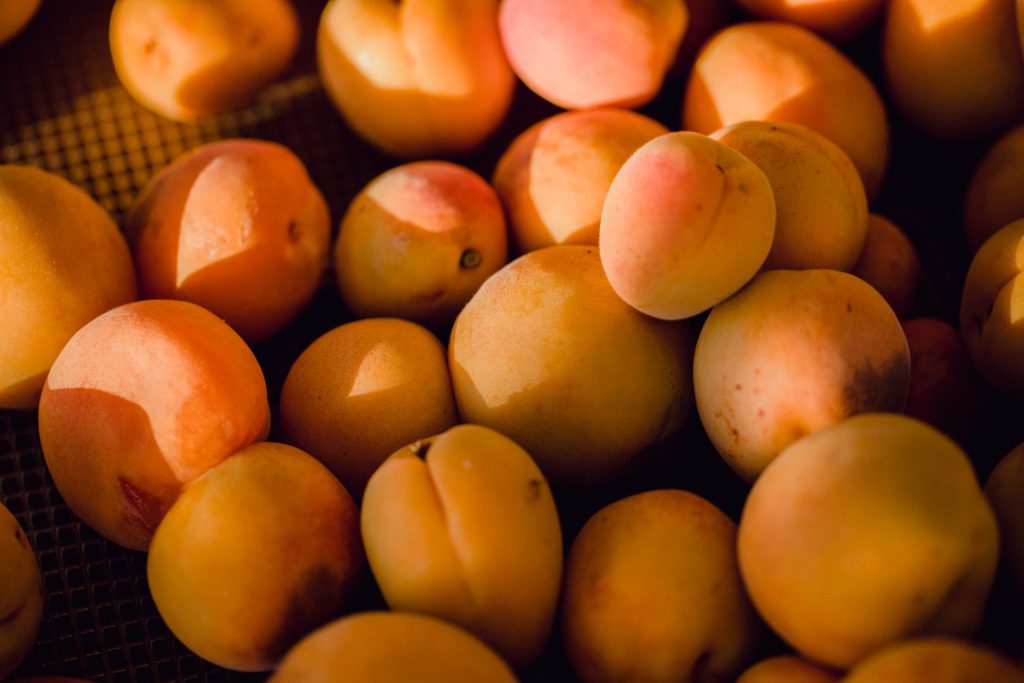
9. Apricots
Peaches and nectarines are great!
Apricots often consumed dried, are not.
The levels of phenolic compounds in apricots are negligible.
However, they do contain anti-microbial, anti-inflammatory, and antioxidant properties.
Wild apricots are low-sugar and high-acid fruits but have been processed for commercialization to be sweeter, which is why they are now on our list of foods to be eaten sparingly.
Selective harvesting has led to a fruit that is higher in sugar and lowers in nutrients, which does not yield the same benefits as other fruits discussed.
Apricots today are lower in vitamins A, C, K, and E (which were high in wild apricots), and several minerals, including potassium and magnesium.
However, each apricot has an incredible 9 grams of sugar and only 0.7 grams of fiber.
While they can be a good source of soluble fiber as part of a healthy diet, their high sugar content and low nutrients make them a snack that should be enjoyed in small doses.
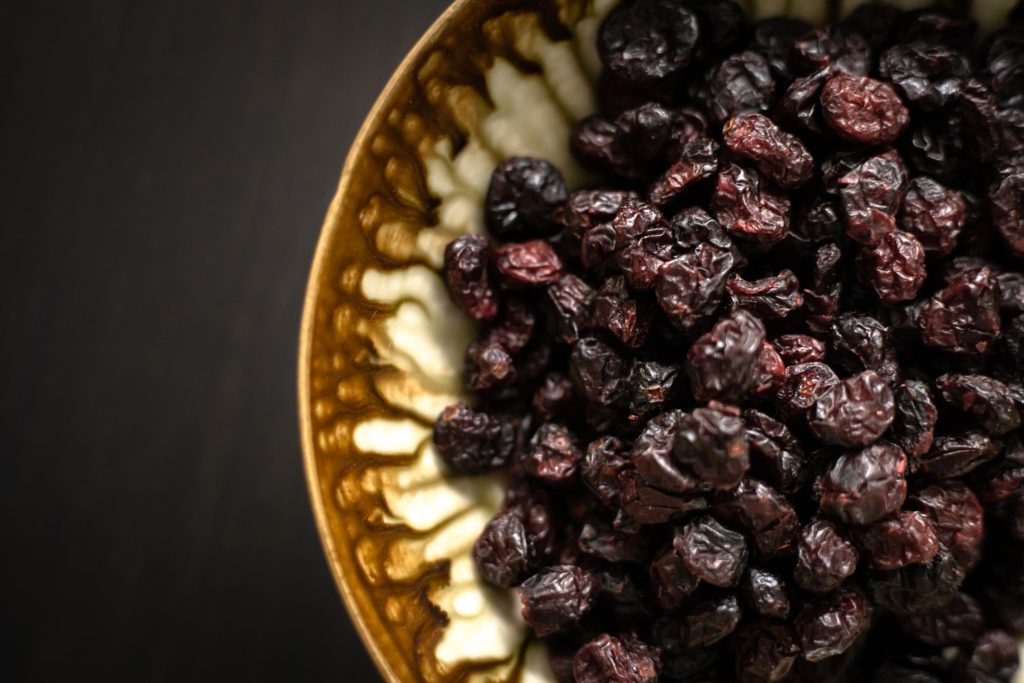
10. Dried Fruits – Raisins, Cranberries, Apricots, etc.
Unless you are going for a snack to take hiking or one that needs to last a while without going bad, dried fruits are the least desirable choice for fruit consumption for two reasons.
The first is that they are very high in sugar (with a handful of these having 24 grams of sugar – the same amount as a handful of jelly beans).
While these are natural sugars and they do contain a good dose of fiber, the low protein and high sugar nature of raisins, craisins, and other dried fruit means they are quickly absorbed into the bloodstream, making your blood sugar level rise rapidly, and don’t keep you feeling full for very long.
While raisins, for example, still have many polyphenols and other benefits of other fruits on our excellent and not-so-good lists, they are calorie and sugar dense, meaning a small handful goes a long way, and it’s easy to overdo it on these dried snacks.
In conclusion
No fruit is a “bad idea,” especially compared to foods like white bread or chocolate that contain few high-quality ingredients that truly nourish our bodies (they’re primarily white sugar and unhealthy, saturated fat).
However, some fruits are high in sugar and low in the nutrients that make your body run smoothly and prevent certain diseases.
By picking and choosing fruits with the best nutrient value and most moderate sugar content, you can have your fruit and eat it too!


